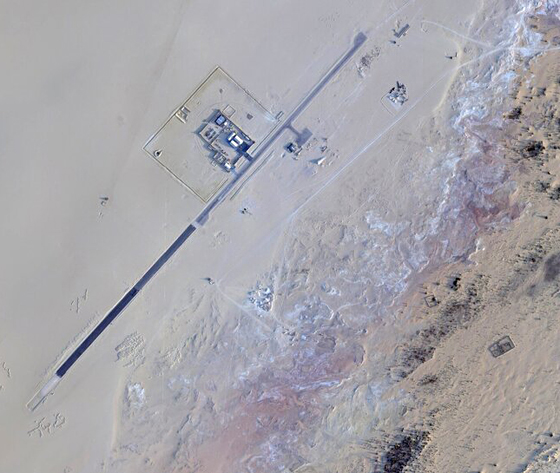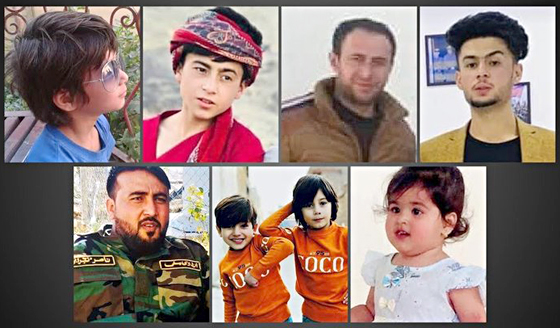Not at any other time in the 21st century has the average American kept up less with the Global War on Terror, and now three presidents later, the questions of legality, productivity, and collateral damage remain as unanswered as they’ve ever been.
Over the last 15 months, the number of US drone strikes in Yemen and Somalia has increased greatly compared to the first half of the Biden Administration. On March 1st, AFP reported that local government sources in the Yemeni province of Marib said a US drone strike had killed the al-Qaeda leader Hamad bin Hamoud al-Tamimi, a “judge” of a sort-of “leadership council.”
This came about a month after similar sources reported 3 supposed al-Qaeda fighters killed in a US drone strike in the same province.
Regarding the latter, the 3 men were killed in a car. Evidence at the scene let two experts tracking the US drone warfare program believe it was an R9X Hellfire missile – an expensive and sophisticated bomb typically reserved for “high-value targets.”
“The R9X is for high-value target killing and we don’t have any [sic] ’Who is this guy, why does he merit this now?’” said David Sterman, a senior policy analyst at the Washington-based think tank New America, which for years has tracked US drone strikes in Yemen. “If it is a US strike, it raises substantial questions about what is the state of the US drone war in Yemen.”
Drones haven’t been in the news as much as they were when former-President Donald Trump substantially downgraded the required authority to launch one from the theater commander, who needed the White House’s permission under the Obama Administration, to officers on the ground.
Only recently did Joe Biden’s administration even establish a policy for their use, long after he had used them to supposedly kill al-Qaeda founder Ayman al-Zawahiri last August, and 10 innocent children and men in Kabul the August before that.
Luke Hartig, the former Director for Counterterrorism at the National Security Council, and former Dept. Director for Counterterrorism under the Sect. of Defense, is one of the only minds in America still actively criticizing drone policy from inside the establishment.
Activist Post is Google-Free
Support us for just $1 per month at Patreon or SubscribeStar
Writing at Just Security, he took a look at Biden’s policy and wrote:
…the new policy leaves much necessary business undone. How the administration interprets key legal and policy concepts around direct action compared to international allies remains hotly disputed. The faithful execution of the policy by the military – particularly how it seeks to prevent civilian casualties and how it investigates civilian casualty incidents – requires much more work. The transparency agenda is stalled, and much of the “war on terror” remains shrouded in secrecy.
For the American people, questions of whether al-Qaeda poses a real threat from the faraway reaches of Yemen, the poorest country in the Arab world, what there is to be gained from hunting these people down, whether civilians are being killed during these strikes, and whether a drone is the best tool to fight al-Qaeda, not only go unanswered, but entirely unasked.

A CIA drone base in Niger that officially doesn’t exist.
Somalia
This gulf between the public and the administration assassinating in their name could never be broader than in Somalia. Of the 7 major theaters for the so-called terror wars, Somalia was always the least understood and reported on.
Somalia briefly wiggled its way into the headlines in May when Biden announced he was deploying 500 military personnel there mostly to train and advise the Somali armed forces to fight al-Shabaab. Before that, the only mention Somalia got had been when former-President Trump decided to pull all American forces out.
On October 3rd, al Jazeera reported that Abdullahi Nadir, one of the co-founders of the armed group, was assassinated by a drone strike. Who Nadir really was, what his power amounted to, and whether his death would at all change al-Shabaab’s ability to operate is anyone’s guess. US Africa Command didn’t mention him by name.
Reporting from Time magazine during the last concerted effort to bomb al-Shabaab quoted Amnesty International that more bombs were dropped in 2020 than in the whole of the Obama Administration, but despite the exertion, the insurgents remained “adaptive and resilient.”
On December 18th, 2022, the US military announced two new airstrikes as part of “collective self-defense” that killed 8 militants. VOA states the Turkish Ministry of Defense neither confirmed nor denied participation with its drones.
The New York Times reported in October around the time Nadir was assassinated that of the 11 drone strikes in Somalia that year, 10 had fallen under “collective self-defense,” a justification that, under Biden’s new policy, bypasses the need for executive branch approval of drone strikes.
The Times also quoted Somali government sources who said the new presidential administration had specifically asked Biden “to more broadly define what can count as a collective self-defense strike,” and to “deem certain parts of Somalia as a war zone, where it is permissible to target members of an enemy force based only on their status, even if they pose no imminent threat.”
On January 22nd, 2023, US air strikes killed 30 militants. “Specific details about the units involved and assets used will not be released in order to ensure operations security,” AFRICOM stated, as they typically do when announcing air strikes.
Garowe News Online reported on a February 23rd attack, noting that all three attacks on al-Shabaab in 2023 have been with drones.
AFRICOM has said that they remain certain no civilians were hurt in any of these strikes, but official Pentagon policy is to neither investigate reports of civilian harm nor to report them if there are any.

From top left to bottom right, the victims of the latest drone strike in Kabul. Farzah Ahmadi, age 9, Faisal Ahmadi, age 10, Zemari Ahmadi, age 40, Zamir Ahmadi, age 20, Naseer Ahmadi, age 30, Binyamen Ahmadi, age 3, Armin Ahmadi, age 4, Sumaya Ahmadi, age 2, Malika Ahmadi, age 2, and Ahmad Naser, a former-U.S. Army contractor, age 30. PC: Leftflank Veterans.
Murdered civilians
In the ten-year history of America’s global drone warfare program, it’s worth taking a moment to list the rampant disregard for civilian life in the pursuit of bombing insurgents.
First, there are the 2016 Drone Papers, revealed by the whistleblower and former signals intelligence analyst Daniel Hale, who was recently sentenced to 48 months in prison.
From 2011 to 2013, 9 out of every 10 people killed in drone strikes in Afghanistan were unknown people who were not designated targets. They were instead labeled “enemy killed an action,” and the Pentagon’s policy that only the military could prove them otherwise meant that what were obviously hundreds of innocent family members and bystanders were not accounted for.
Hartig, writing in the aftermath of the August 29th strike in Kabul mentioned before, said that in his days as counter-terrorism director, he analyzed “about two thousand [civilian casualty] incidents since 2007, and there were many more in the years prior.”
“Conservatively, that alone translates into, on average, every week since 9/11 at least one such tragedy,” he said.
Pulitzer Prize-winning reporting on a cache of classified documents by Azmat Khan tallied more than 1,300 murdered civilians in Iraq and Syria during the campaign to target ISIS, none of which resulted in any charges of wrongdoing, imprisonments, or even demotions.
Instead, Khan shows how the seemingly thorough and concrete intelligence gathering and accounting methods for who and when to bomb and what should happen if a civilian dies, established specifically to prevent civilian harm, mutated into the very methods that led to so much unaccounted-for innocent blood, as details were buried in bureaucratic language where children were described as a “person of small stature,” and strike reports were buried in operation paperwork.
Yet more reporting from the Times on a top-secret “strike cell” operating under the Trump Administration called Talon Anvil curdles the stomach to read, as they detail the wolfish policies of the 20-man covert intelligence and drone strike team that killed hundreds of civilians, appalling CIA and military colleagues who would sometimes not carry out strikes on Talon Anvil intelligence because of their reputation for rampant disregard for civilian harm.
What all this means is that even after perhaps more than 10,000 civilians across the Middle East and Africa being killed as a direct result of a trigger pulled by a drone operator in the name of protecting the American people, the exact same policy that started all the bloodshed has been more or less re-instituted, with little or no transparency.
Andrew Corbley is founder and editor of World at Large, an independent news outlet. He is a loyal listener of Antiwar radio and of the Scott Horton Show. Reprinted with permission from World at Large.
Source: Antiwar


Be the first to comment on "Slowly But Steadily, the Executive Branch is Bringing Back Widespread Drone Warfare"